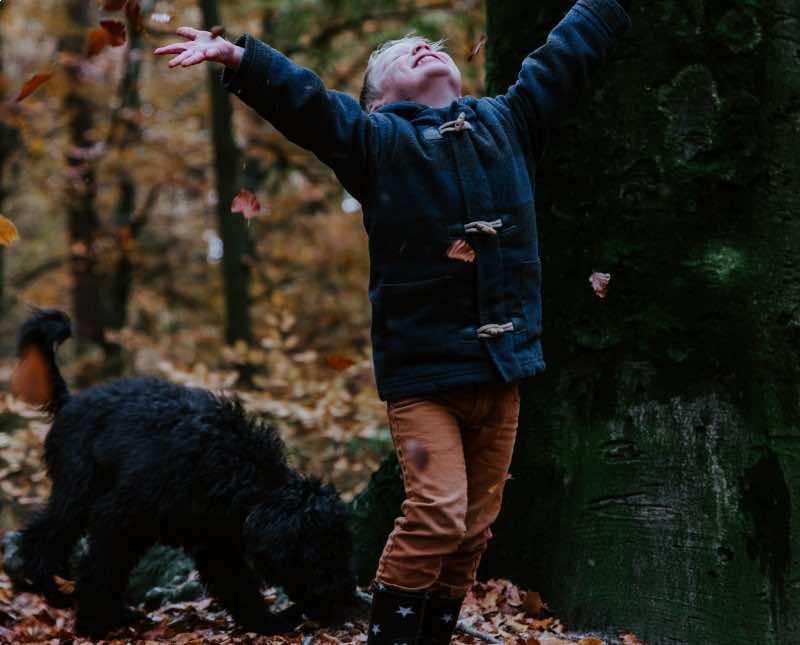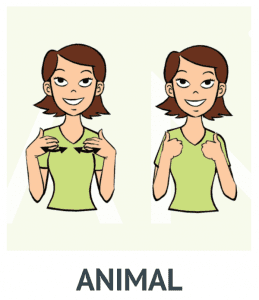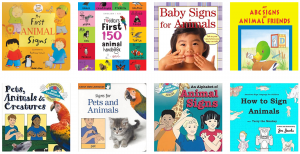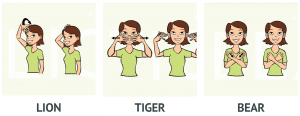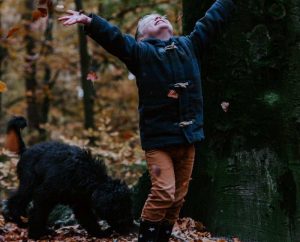Did you know that animals appear in 27% of children’s books? Animals are living things (e.g., earthworms, crabs, birds, and people) that play a huge role in children’s lives, saturating their books, toys, and games. Children have always been fascinated by animals, making ASL animal signs a popular topic to learn about.
The first sign you’ll want to learn is the actual sign for animal, which is also the same sign as creature and beast. To form the sign: your fingertips touch the chest, the fingers stay straight, and the hands pivot inward toward each other twice, which can be seen in this video by Handspeak or the image from Baby Sign Language pictured below.
Depending on your end goal, you’ll have different options for learning animal signs. You can rely on online dictionaries, print dictionaries, deaf friends and family, ASL teachers, apps, YouTube videos, or books.
__________________________________________________________________________________
Books
Children, and adult language learners alike, find benefit in tactile materials. Books are a great reference material for language learning and come in handy when screen time is limited. Check your local library for the following books to learn more about animal signs, but keep in mind that signs in books can be tough to decipher considering ASL is a visual language that involves movement. Whenever possible, supplement pictures and images of signs in books with digital versions and videos of animal signs.
__________________________________________________________________________________
Types of Animals
There are many types and categories of animal signs. You may want to focus on pets (e.g., cat, dog, fish, bird rabbit, mouse, turtle, snake), farm animals (e.g., cow, pig, horse, donkey, chicken, rooster, sheep, goat), woodland or forest animals (e.g., deer, turkey, fox, squirrel, raccoon, skunk, wolf, bear), zoo animals (e.g., lion, tiger, elephant, giraffe, monkey, gorilla, alligator, kangaroo), or the many other types of animals (e.g., aquatic, tropical, safari, birds, underground). The options are as endless as the animals you can think up. Regardless of the category you choose, Signing Savvy has a great compilation of animal sign videos and Baby Sign Language has free flashcards (that include pictures and signs) to get you started.
__________________________________________________________________________________
Animal Noises
Animals are quite straightforward signs. The noises, screeches, hums, growls, chirps, grunts, bleats, mews, cheeps, clicks, quacks, brays, yelps, chatters, screams, croaks, howls, and calls they make, on the other hand, are a bit more tricky and beyond the scope of this post. But, once you have the basic animal signs down, you can put the sounds they make on your list of signs to learn next.
__________________________________________________________________________________
What’s Next?
Learning signs arbitrarily will rarely help you develop ASL fluency, but that doesn’t mean you can’t have fun learning a sign or two here and there. Once you know a few animal signs, try to use them in context. For example, when discussing a field trip to a local farm, a trip to the vet with your pet, or an outing to the local pet store to shop, use the animal signs you’ve learned to enhance the outing. Sign up for private lessons when you’re ready to have personalized support from a teacher to take your ASL learning further.
Magen Hom
